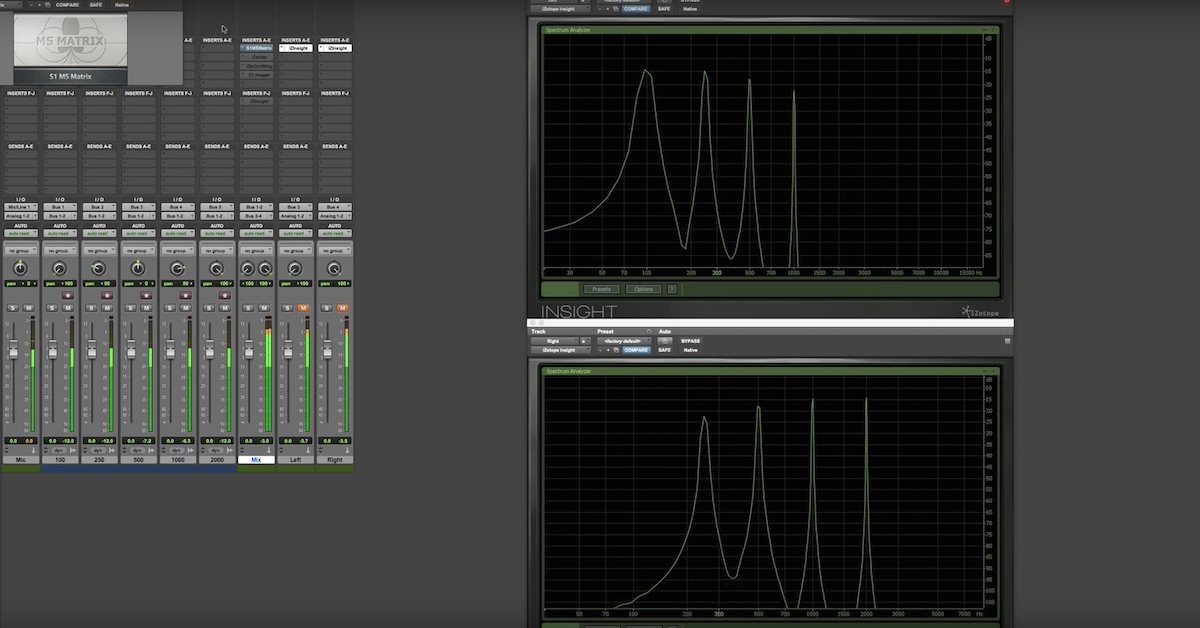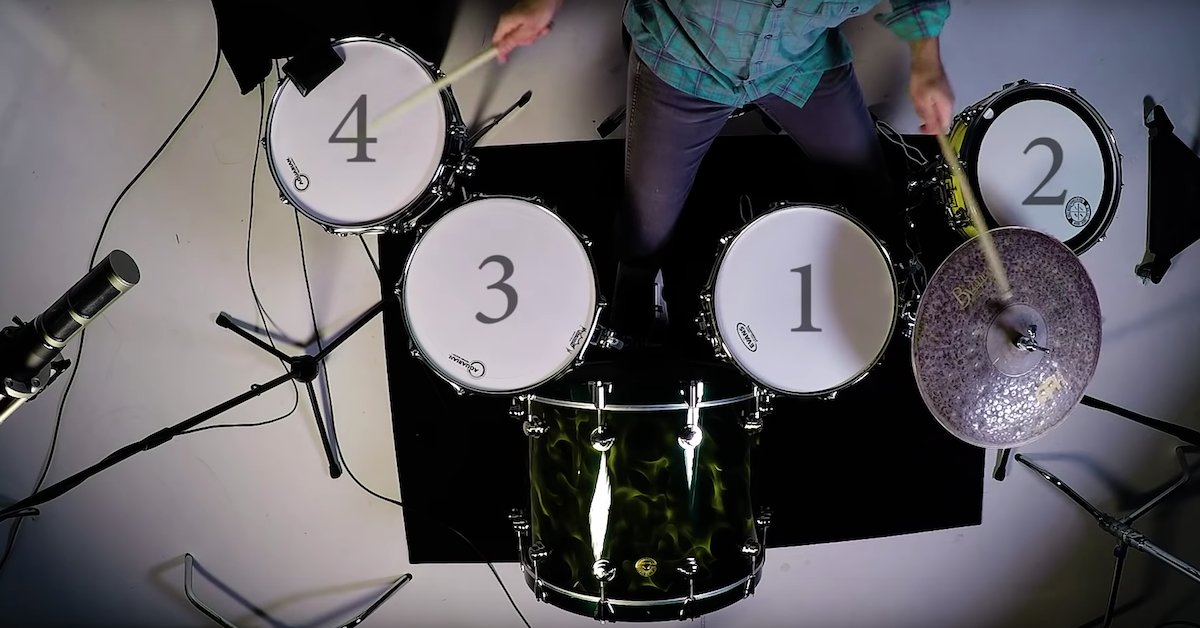7 Crucial Mistakes Engineers Make Running Live Sound
Article Content
Live sound is complicated. It’s a combination of art, science and customer service (nobody likes to admit that last part, but it’s true). There are dozens of channels, sends and settings to keep straight, and if anything does go wrong, all eyes in the room are on you.
We’ve all been there. We’ve all made mistakes, whether we’re fresh out of school or fresh off of our 25th tour. Sometimes, it’s no big deal and nobody notices, but occasionally, you ruin a wedding or two.
Here are the most common and crucial mistakes people make running live sound.
1. Over-Mixing
These days most venues, churches and production companies are outfitted with digital consoles. They’re compact, flexible and they pack a mean bang-for-the-buck. They usually offer 3-5 bands of fully parametric EQ, compression and gates for every channel, as well as multiple interchangeable FX sends.
If you’re not comfortable with the console, you might just freeze up from analysis paralysis, but if you know your way around the board, it’s really easy to get carried away with virtually unlimited processing.
Don’t go crazy with the EQ. You’re not mixing in the studio. Live sound is largely correcting problems with subtractive EQ. Sure, it’s fun to roll off some of the top-end on your hall reverb, but don’t let that distract you from the things that actually need attention.
Compression should be used sparingly. The lead vocals should be the center of your attention. Focus on creating consistent dynamics instead of adding punch. Sure, there are plenty of excuses to compress the kick and snare, but the cymbals? The mandolin? Just because you have it doesn’t mean you should use it.
Same goes for gates. Their main purpose is to reduce drum bleed. There’s no reason to gate the guitars or the vocals. It’s going to cause more problems than it’s going to prevent.
2. Under-Mixing
Digital consoles are great because they allow you save presets of your favorite settings, but that’s no excuse to get lazy.
The equipment on stage, the placement of the mics and even the temperature of the room that day can affect the way a show sounds. You can’t assume your presets are going to work every night because you don’t know how the room is going to sound.
Similarly, if your presets were made for an indie rock group, why would you assume the same frequencies will work for a jazz trio or a metal band?
After the second or third song, you’ll probably have the band pretty much dialed in, but your job doesn’t stop there. Walk around the room and see how it sounds to the crowd. You aren’t the only one at this show, you know.
Even after you’ve got everything sounding perfect, you should still have eyes on the band. You need to react to their song: pull up the guitar during a solo, mute the FX during talk sets and for God’s sake — pay attention!
Don’t be that engineer who forgets to un-mute the bassist’s mic until halfway through the third verse when you see them flailing their arms on stage after noticing the awkwardly long instrument bridge…
3. Mixing With Your Eyes
This is usually a problem for people who mix on digital desks or in the box. The graphic on the screen is there to guide you, not make decisions for you.
Use your ears. Stop looking at the screen and doing what you think you’re supposed to do instead of what sounds good. Would you make a -9dB cut at 250Hz if you weren’t looking? Or would it be 13.7dB at 237Hz?
Don’t flatten out the house EQ because it doesn’t notch out your least favorite frequency. Use your ears and make an assessment on how something sounds before you grab a knob to fix it.
Don’t be afraid to move a microphone either. Some engineers will make a -12dB cut to clean up the mud in a guitar before they’ll move the mic back a 1/2”.
4. Poor Balance
The #1 most important part of the mix, regardless of the genre, is the vocal. That’s what people likely paid to see. You can hear the instrumental really loud at home. At a live show, the vocal is the center of attention.
A common mistake is to mix all of the instruments evenly. That may sound good in headphones, but people are here for the vocals — so turn them up!
Another common balance problem is too much kick. It’s very pleasing to feel the kick in your chest, but you can’t do it at the cost of the vocal or any other instrument. Loud kick drums are great, but they can’t be the loudest part of your mix.
Same goes for the bass and basically anything else you’re running through the subs. Don’t be afraid to high-pass channels to clean up the low end or even turn down the amps for the subs to keep the low end in check. Vocals and other instruments are very easily masked by the low end, so excessive subs can kill a show rather quickly.
Finally, and this is difficult to type… there is such a thing as too loud. Obviously, smart engineers bring protection to every gig, but you can’t leave them in all night and if the audience is complaining about the volume, it’s kind of your job to deal with it. Honestly, your mix will sound cleaner and clearer at a reasonable level.
5. Not Knowing The Basics
I know it’s not as sexy as parallel compression, but gain structure and signal flow are really important. If you want to work in live sound you need a thorough understanding of both.
Without a solid understanding of signal flow and gain structure, you’re asking for a nightmare. Feedback, monitor issues and balance problems will happen if you don’t know how to properly set levels and route signal through the system.
Another common problem area is miking technique. Proximity effect and phase relationships can ruin a mix and are easily undetected by the untrained ear.
6. Bad Time Management
Changeover can be tight. That’s the amount of time you have to tear down all of Band A’s gear and mic up Band B’s gear. It’s usually between 10 and 20 minutes.
You don’t want to be the reason a band has to cut one of their songs. The fans will be mad. The band will be mad. Your boss will be mad. Get things done early so you don’t have to scramble when it’s go-time.
Put in the work during load-in so you don’t have to stress at the end of the night. If you don’t take the extra 2 minutes to make your cable runs neat, one of them will go bad during the first song and you’ll have to spend an extra 20 minutes fixing it. That’s Murphy’s Law. Whatever can go wrong, will go wrong. Bet on it.
7. Lacking Confidence
It’s not exactly cool to talk about, but sound engineers don’t tend to be shining examples of mental health. A lot of us lack confidence. Confidence to charge what we’re worth. Confidence to tell the guitarist to turn their amp down. Confidence to trust use our ears or trust our guts.
A little confidence can go a long way. To paraphrase Beethoven, the only wrong note is a note made without confidence. As long as you do it with confidence, no one will question it.
Introduce yourself by name at the beginning of the night. Define yourself as a person of authority and a point of contact. The band will listen to you when you tell them to turn it down, not to cup the vocal mic, or if they only have 5 minutes left.
Bonus: Being A D*ck!
Seriously, it’s not that hard. Just don’t be a d*ck. The hours are long, the work is hard and the talent can be rude sometimes, but it’s worth it. If you don’t want to do it, then shut up and get out of the way, because someone else does.
Nobody wants to work with someone who’s grumpy all the time. That goes for the both the production staff and the talent. Suck it up, drink some coffee and get to work. The easier you are to work with, the more people will want to work with you. Break a leg!






